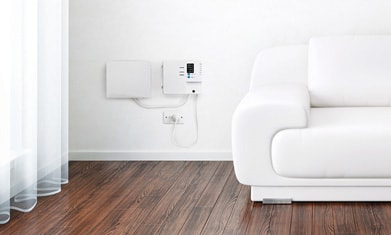nbnTM Battery Backup Power


Battery Backup
Most nbnTM services being provided are not self-powered unless a Battery Backup Service is installed. In the event of a power outage your landline phone and internet services over the nbnTM network will not be available. As advised by the NBNCo, if you choose to have the nbnTM Power Supply Unit with Optional Battery Backup Service (pictured right) as part of your installation, it comes with the battery when it is first installed into a home or business.
What Does the Battery Backup Mean?
The Power Supply with Battery Backup powers the NTD in the event of power failure or if the power is switched off at, or disconnected from, the power point to support some services using certain types of telephones/devices for a limited period of time (a total of approximately 5 hours under typical conditions including the emergency reserve function) provided they use supported ports.
By not agreeing to have the battery backup power connected, no services connected to the nbnTM installed equipment including telephone and data services will not work during a power failure or if the power is switched off at, or disconnected from, the power point; and
- Should ensure they have an alternative service (e.g. a mobile phone) available to place emergency phone calls if the end user’s nbnTM based service is not available.
- nbnTM internet and phone services does not provide continued telephone or data service operation in the event of a power failure or if the power is switched off at, or disconnected from, the power point
- Security alarms (or burglar alarms) are sometimes installed in a premise and are often monitored ‘back to base’ by an alarm company. The security system is commonly connected to a copper telephone line in the premises. When a monitored alarm is activated, the alarm dials ‘back to base’ to inform the alarm company that the alarm has been triggered. Many medical alarms operate in a similar way and are usually triggered by an end user pressing an emergency button. When the alarm is activated, a call is placed to a monitoring centre and a response is provided to the end user. Monitored security and medical alarms both use telephone tones (also known as DTMF tones) to communicate with the central monitoring centre and rely on a high quality telephone service being available. Industry peak bodies estimate that there are approximately 1.5 million back to base security alarms and approximately 300,000 medical alarms in operation.
IF YOU HAVE A SECURITY OR MEDICAL ALARM – CONTACT US TO DISCUSS YOUR REQUIREMENTS.
NBN Co offers multiple ways to deliver a telephone service to support back to base security and medical alarms. An RSP can utilise either the UNI-V or UNI-D ports to deliver a telephone service capable of supporting these alarms. The diagram below provides an illustration of how either the UNI-V or the UNI-D could be used to deliver a telephone service. Back to base security and medical alarms are often designed with an internal battery to support their operation in a power outage. Given that end users may rely on alarm services during a blackout it is important that steps are taken to seek to ensure that the telephone service can also remain operational to the extent practical.

